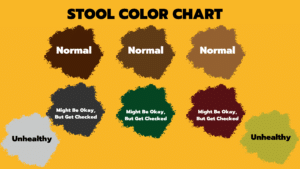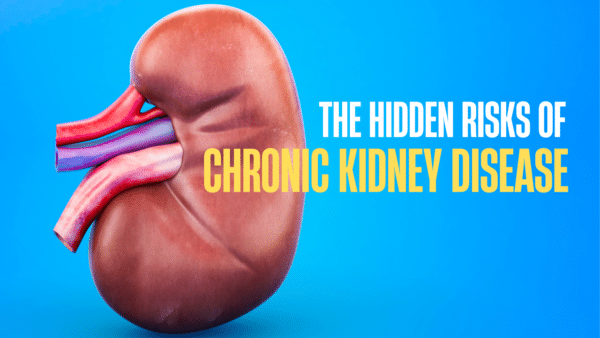Navigating through the topic of healthy stool can be confusing and awkward. It’s not usually dinner table talk, but the condition of your stool provides vital insights into your overall health. This article delves into a medically-informed perspective of what your stool is telling you.
The Basics of Bowel Movements
Understanding the normal physiology of bowel movements is the first step toward interpreting your stool health. When digested food moves through your intestines, your body absorbs water and nutrients, eventually forming stool in the colon. Here, timing, hydration, diet, and gut flora play crucial roles.
Types of Stool: The Bristol Stool Chart

Use the Bristol Stool Chart as a reference to classify your stool into one of seven types, each with distinct characteristics and health indications. Types 3 and 4 are typically considered normal.
Color Code: What Different Stool Colors Mean
- Brown: Standard and healthy
- Green: Often related to diet or excessive iron
- Yellow: Could indicate malabsorption
- White: May signify a lack of bile; consult a healthcare provider
- Red or Black: Possible indication of gastrointestinal bleeding
Consistency Matters: Decoding the Texture
- Hard: Lack of fiber or hydration
- Soft and Smooth: Indicates a well-balanced diet
- Loose or Watery: Possible food intolerance or infection
Frequency: How Often Should You Go?
The general guideline is one to three times per day to three times per week. Any extreme deviation should be discussed with a healthcare provider.
Red Flags to Watch For
- Consistent changes in color
- Persistent constipation or diarrhea
- Blood in the stool
If any of these persist, consult a healthcare provider immediately.
Common Myths Debunked
Myth: Daily bowel movements are mandatory for health.
Fact: Frequency varies among individuals.
Myth: Dark stools always indicate a serious problem.
Fact: Some foods and medications can darken stool.
Practical Tips for Healthy Bowel Movements
- Incorporate high-fiber foods into your diet
- Stay well-hydrated
- Limit processed foods and added sugars
- Exercise regularly to stimulate gut motility
By paying attention to your stool’s characteristics, you’re taking an essential step toward long-term health and well-being. Trust this guide as a robust reference for understanding your body’s silent but telling signs.
Managing Stress for Optimal Gut Health
Stress will wreak havoc on your gut health, affecting everything from the frequency of bowel movements to the texture and color of your stool. Stress management techniques, including deep breathing, yoga, and even short walks, can restore a sense of calm, helping your digestive system function more effectively.
Dietary Changes for Improved Stool Quality
Nutrition plays a critical role in shaping the quality of your stool.
- Fruits and Healthy Vegetables: Rich in fiber and water content, they help soften the stool.
- Whole Grains: Offer a more substantial amount of fiber than their processed counterparts.
- Probiotics: Found in yogurt and fermented foods, they maintain a good balance of good bacteria in the gut.
Incorporating these into your diet can make a noticeable difference.
Medications and Supplements: What You Should Know
- Antibiotics can sometimes disrupt the balance of gut bacteria, leading to loose stools or constipation.
- Iron Supplements: May darken the color of your stool, a generally harmless effect.
- Laxatives: Useful for temporary relief from constipation but should not be used long-term without healthcare guidance.
Always consult your healthcare provider before starting any medication or supplement that affects your digestive system.
When to Seek Medical Advice
While minor stool variations are generally no cause for concern, some conditions necessitate immediate medical attention.
- Persistent Blood in Stool: This could be a sign of hemorrhoids but may also indicate more serious conditions like cancer.
- Chronic Constipation or Diarrhea: Ongoing symptoms could signal underlying disorders like Irritable Bowel Syndrome (IBS).
- Sudden Weight Loss: If you’re losing weight without trying and experiencing digestive issues, seek medical advice.
The Role of Exercise in Promoting Healthy Bowel Movements
Exercise doesn’t just keep your muscles in good shape; it also promotes healthy bowel movements by improving the motility of the gastrointestinal tract. A moderate 30-minute walk each day can significantly benefit your digestive health.
Conclusion: Taking Control of Your Digestive Health
Understanding the nuances of what your stool tells you can be invaluable in managing your overall health. By focusing on color, consistency, and frequency, you arm yourself with knowledge, enabling better discussions with healthcare providers and more informed choices for a healthier lifestyle.
In a world where health is often overlooked until a problem arises, being proactive about your digestive health can make all the difference. This comprehensive guide aims to be your go-to resource for all things related to the healthy stool chart, guiding you toward optimal wellness from a medical perspective.
A simple blood test is one way to get a baseline on your stool health. You can find out more about those tests here.

